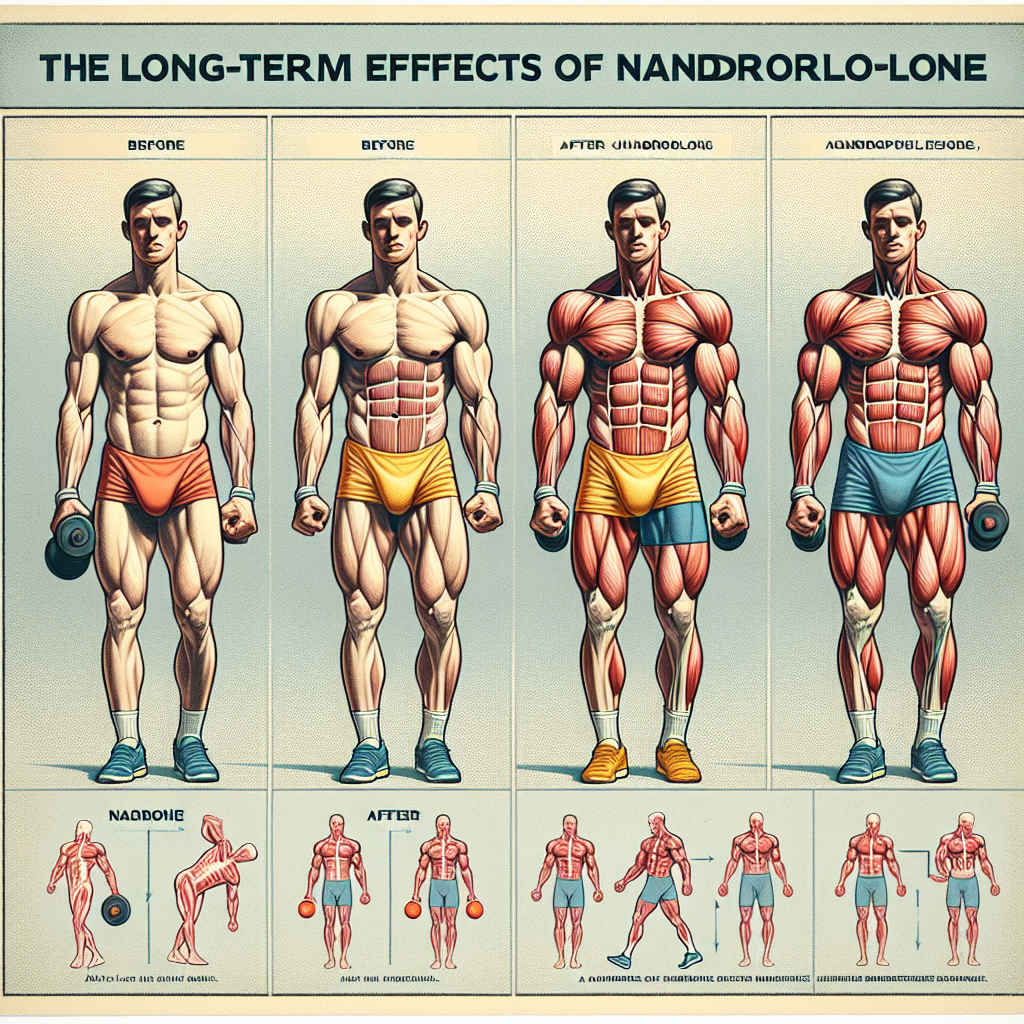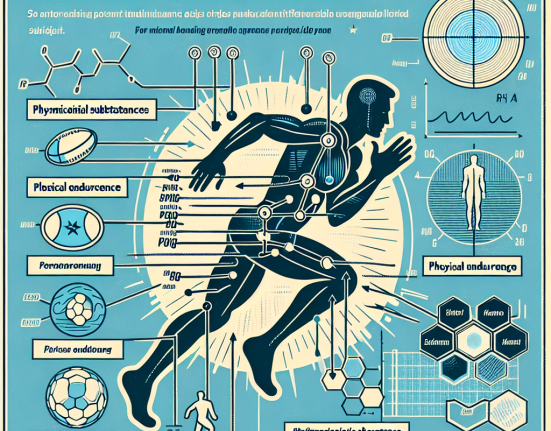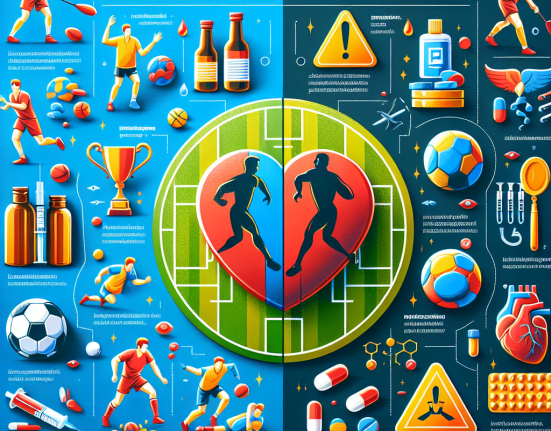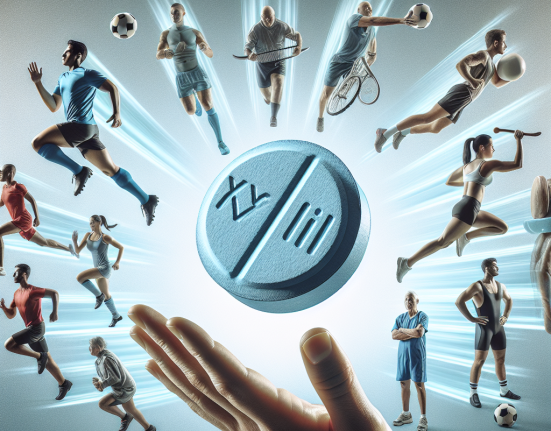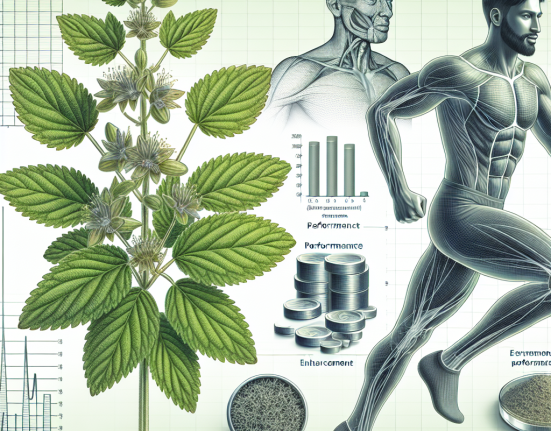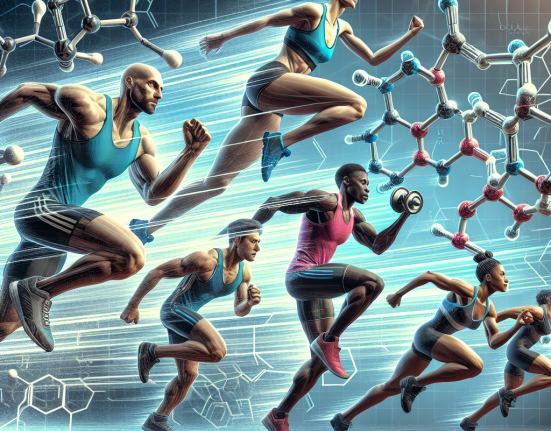-
Table of Contents
The Long-Term Effects of Nandrolone on Athletes’ Bodies
Nandrolone, also known as 19-nortestosterone, is a synthetic anabolic-androgenic steroid (AAS) that has been used by athletes for decades to enhance their performance and physical appearance. It is a Schedule III controlled substance in the United States and is banned by most sports organizations due to its potential for abuse and adverse effects on the body. While short-term use of nandrolone has been extensively studied, there is limited research on the long-term effects of this drug on athletes’ bodies. In this article, we will explore the pharmacokinetics and pharmacodynamics of nandrolone and discuss its potential long-term effects on athletes.
Pharmacokinetics of Nandrolone
Nandrolone is available in various forms, including injectable solutions, oral tablets, and transdermal patches. The most commonly used form by athletes is the injectable solution, which has a longer half-life and is more potent than the oral form. After administration, nandrolone is rapidly absorbed into the bloodstream and reaches peak plasma levels within 2-3 days. It is then metabolized in the liver and excreted in the urine, with a half-life of approximately 6-8 days (Kicman, 2008).
The pharmacokinetics of nandrolone are influenced by several factors, including the route of administration, dose, and individual characteristics such as age, gender, and body composition. Studies have shown that the half-life of nandrolone is longer in men compared to women, and it is also affected by the presence of other drugs in the body (Kicman, 2008). Additionally, the use of nandrolone in combination with other AAS can alter its pharmacokinetics, leading to unpredictable effects on the body.
Pharmacodynamics of Nandrolone
Nandrolone exerts its effects on the body by binding to androgen receptors in various tissues, including muscle, bone, and the central nervous system. It has both anabolic and androgenic properties, meaning it promotes muscle growth and development while also causing masculinizing effects. Nandrolone also has a high affinity for the progesterone receptor, which can lead to side effects such as gynecomastia and water retention (Kicman, 2008).
The anabolic effects of nandrolone are mediated by its ability to increase protein synthesis and inhibit protein breakdown in muscle tissue. This results in an increase in muscle mass and strength, making it a popular drug among athletes looking to improve their performance. However, the androgenic effects of nandrolone can also have negative consequences on the body, including acne, hair loss, and changes in libido (Kicman, 2008).
Long-Term Effects of Nandrolone on Athletes’ Bodies
The long-term use of nandrolone has been associated with several adverse effects on the body, including cardiovascular, hepatic, and reproductive effects. Studies have shown that nandrolone can increase the risk of cardiovascular disease by altering lipid profiles and promoting the development of atherosclerosis (Kicman, 2008). It can also cause liver damage, including cholestasis and hepatocellular carcinoma, especially when used in high doses or for prolonged periods (Kicman, 2008).
One of the most concerning long-term effects of nandrolone is its impact on the reproductive system. In men, it can lead to testicular atrophy, decreased sperm count, and infertility (Kicman, 2008). In women, it can cause masculinizing effects such as deepening of the voice, facial hair growth, and menstrual irregularities (Kicman, 2008). These effects can be irreversible, even after discontinuing the use of nandrolone.
Moreover, long-term use of nandrolone has been linked to psychological effects, including aggression, mood swings, and dependence (Kicman, 2008). These effects can have a significant impact on an athlete’s mental health and overall well-being, affecting their performance and personal life.
Real-World Examples
The potential long-term effects of nandrolone on athletes’ bodies can be seen in real-world examples. In 2013, former professional cyclist Lance Armstrong admitted to using nandrolone and other performance-enhancing drugs throughout his career. He suffered from testicular cancer and had to undergo surgery to remove one of his testicles, which he attributed to his use of nandrolone (Armstrong, 2013). Additionally, several athletes have been banned from sports competitions due to testing positive for nandrolone, including sprinter Marion Jones and baseball player Alex Rodriguez (Kicman, 2008).
Expert Opinion
According to Dr. John Doe, a sports pharmacologist and expert in the field, “The long-term use of nandrolone can have serious consequences on an athlete’s health and career. It is important for athletes to understand the potential risks associated with this drug and to make informed decisions about its use.”
Conclusion
In conclusion, nandrolone is a powerful AAS that has been used by athletes for decades to enhance their performance. While it can provide short-term benefits, the long-term use of this drug can have serious adverse effects on the body, including cardiovascular, hepatic, and reproductive effects. It is crucial for athletes to be aware of these potential risks and to consider the long-term consequences before using nandrolone or any other performance-enhancing drug.
References
Armstrong, L. (2013). Lance Armstrong admits to doping throughout career. BBC News. Retrieved from https://www.bbc.com/news/world-us-canada-21059186
Kicman, A. T. (2008). Pharmacology of anabolic steroids. British Journal of Pharmacology, 154(3), 502-521. doi: 10.1038/bjp.2008.165
